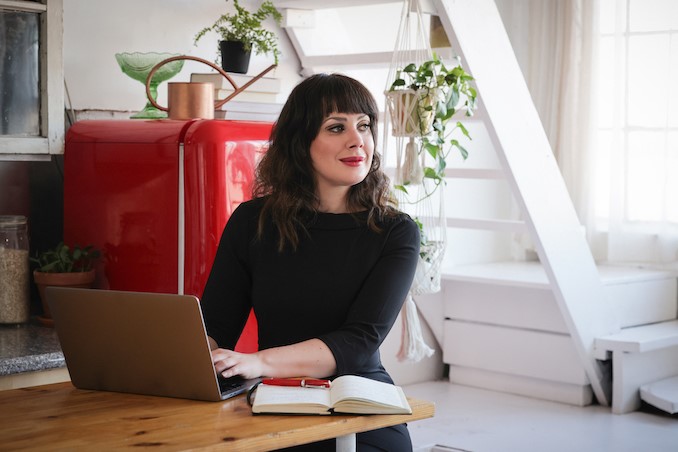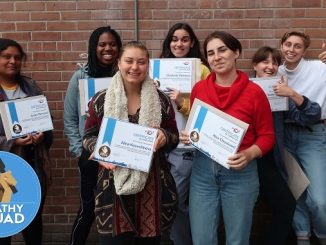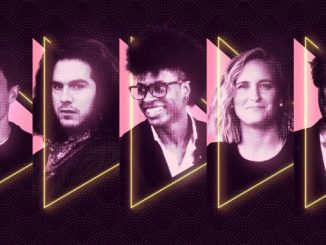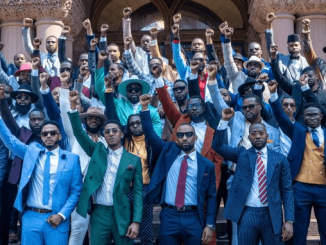We recently spoke with Lauralee Sheehan, Founder & Chief Creative Officer (CCO) of Digital 55, about creating a new and exciting interactive media experience.

What is your business called and what does it do?
Digital 55 is a collective of award-winning designers, developers, researchers, and content producers working together to create unique, innovative digital interactive media and learning experiences.
We work with various not-for-profits, government agencies and companies on original content, research, user experience, design, dev, content architecture, learning experience design and strategy, and digital interactive storytelling. What makes us most unique is our rebel spirit, rooted in the interdisciplinary arts, such as music, film, design, and cultural anthropology. We are pretty much obsessed with the intersection of creative and tech. We tackle pertinent, real-time topics such as leadership skills, anti-discrimination, 21st century skills, the future of work, digital wellness and so on.
What made you want to do this work?
My digital career really started from being a musician and playing in a band. We started doing all sorts of modular development and experience design and it iterated into a hardcore digital career – so, Digital 55 was really born out of an indie rock band!
Everything we do always looks super cool, modern, and fresh. Still, our true value is that we call ourselves rebels with a cause as we believe in designing for good and digging into complex subject matter that is supporting societal conversations, especially in light of a changing society. With our unique, interdisciplinary background, we can disrupt and intersect different thinking to design and produce content in a way that traditional media companies don’t usually do.
What problem did you want to solve with the business?
I created Digital 55 because I wanted to support social change through fresh, innovative digital design and interactive media. It really comes down to the stories we are telling and the content we are producing.
Storytellers are educators and this is important to acknowledge. I’ve learned that storytelling is a critical way to share diverse perspectives and the lived experiences of a spectrum of people. Human experiences are complex and I always knew that telling stories was an important way to honour and connect those experiences, create understanding, provide access to knowledge and through that work, create change.
Who are your clientele/demographics?
Our clientele consists of purpose-driven organizations on a mission to provide education and knowledge-based content (or edutainment) on issues such as:
• Equity, Diversity and Inclusion
• 21st Century Skills and Future of Work
• Anti-discrimination
• Human Rights & Intersectional Issues
• Arts & Culture
• Leadership Skills
• Digital Skills & Digital Wellness
We also have an original content vertical in the company which we’ve recently launched so we have a few originals in production where we research, produce and develop topics and media content such as exploring cannabis culture, heartbreak, and other unscripted content.
How does your business make money? How does it work?
We make money through our client work by producing content and digital interactive media / digital learning on those projects which are very production based in terms of a fee for the project based on scope and sometimes equity deals included on produce-from-scratch collaborations. We also have been working on monetizing our original content and IP through more media-based distribution, production and development deals and funding!
Where in Toronto can we find your profession?
We’ve invested in studio space at Startwell – the hub of tech innovation! However, you won’t find us hunched over a laptop there ALL of the time since we’re often on-location filming original content around the city as well as travelling to conferences and festivals for business and collaboration development (ah, those were the good days and here’s to looking at you SXSW and Banff Spark)!
What is the best question a prospective customer could ask a member of your profession when comparing services? Give the answer as well.
How do you approach sequenced and exploratory content that is not static and has to be understood on a few different levels?
At Digital 55, we believe that all experiences can be opportunities for learning, and that all learning opportunities should be experiential. Our cross-functional team puts this into action by combining fundamental adult learning principles with iterative design thinking systems: defining, designing, prototyping, and implementing in order to always proactively address the conditions of the learning environment, identify real learner needs, engage in human-centred design, and support broader project goals for learning experience design (LX). From there, the Digital 55 experience design team gets to work creating multiple components and levels of the digital product build, collaborating across content creation, media production, visual and interaction design, and digital development in order to allow ideas and developments in one area of the project build to iteratively inform and shape the ideas and developments forming in the others. This collaborative, cross-functional approach, which we refer to as “stacking,” breaks from traditional instructional design frameworks in order to ensure a cohesive total experience that heightens learning, and maximizes understanding, retention, and application among adult learners.
What is the best part about what you do? What is the most challenging part?
The best part about running Digital 55 is that we’re working on wildly exciting, inspiring and socially relevant projects where we get to do deep thinking on content and rebel type producing on the digital and media side (or offbeat storytelling as it’s been called as of recent).
By focusing on the things that inspire you, it will translate to your success as a business owner. For instance, I am a huge film and music buff and sometimes watching the latest film by, say David Fincher, is going to get me away from the mechanics of entrepreneurship and tune into that high level thinking that is the super powerful, valuable part. You have to care about what you are doing and not just from a business perspective but from a human experience and social sustainability perspective. Invest in the things that inspire you with no inhibitions and that will come back to you tenfold.
The most challenging part about being an entrepreneur is that it’s a bananas lifestyle. I think a lot of people can run a business and have success in the entrepreneur space but I do also think that it’s important to acknowledge that it is not very glamorous at all, despite what social media might have you believe. You sacrifice other parts of your life to give to your business, your team, your clients and collaborators, and the work you are putting out into the world. There are things that you will have and things that you won’t have in life because you are an entrepreneur.
What is your favourite joke about your own profession?
Designing for Digital Interactive Media is “making it look pretty”. That is one of the outcomes of all our digital builds but that is not what we do so I think that phrase to describe a complex process can really undervalue the integrated nature of digital development and content producing.
PAY IT FORWARD: What is another Toronto business that you love?
I love so many Toronto businesses and especially right now during these crazy times. I’m a true Toronto gal in terms of being in love with this city, its culture and vibrancy, that definitely comes from our businesses and communities. Here’s my rapid fire list (and not at all comprehensive):
• Bloor Street Boxing Club
• The Revue
• Tonight
• Food & Liquor
• Grand Trunk
• Nice Nice
• Bar Fancy
• The Drake
• The Ace
• Jinx Coffee
• Safehouse
• The Lakeview
• The Annex Hotel
• Craig’s Cookies
• Bom Dia Cafe



